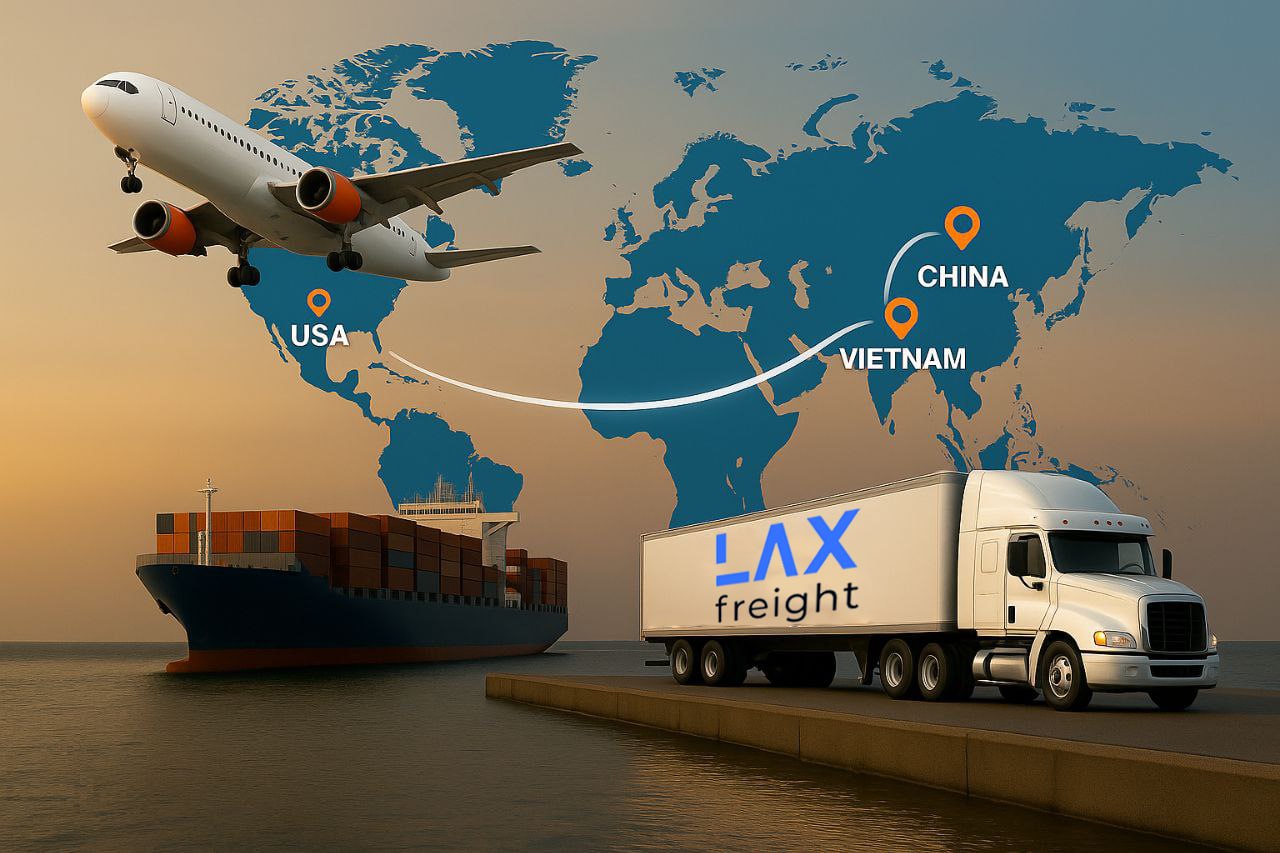Effective delivery often requires strategies to balance efficiency, costs, and customer satisfaction. Among these solutions, blind shipping may help maintain the integrity of the supply chain and safeguard business relationships. We explore what is a blind shipment, how this method works, and its benefits for your operations.
What is blind shipping?
Blind shipment means delivery when a retailer provides an order shipping from the supplier directly to the customer. Its main peculiarity is that the supplier’s details are hidden from the client and the cargo is packaged and labeled with the retailer’s branding. Understanding the work principles of blind shipment in trucking is necessary if you want to optimize the supply chain processes and improve customer experience.
Blind shipment allows retailers to expand their product offerings by fulfilling orders from suppliers. It also provides confidential relationships that can improve overall competitiveness of a retailer.
However, this transportation type requires careful coordination to ensure prompt delivery and compliance with the packaging and supply instructions.
Benefits of using blind shipping
This shipment method offers several advantages for businesses. It accelerates the delivery process, protects business interests, and coordinates processes.
- Enhanced confidentiality. Blind shipment ensures that the customer doesn’t have the supplier’s information. It helps maintain business privacy and protect the supplier’s identity. This protects proprietary relationships and prevents direct business transactions between them.
- Streamlined operations with carriers. Bling shipping accelerates the supply of goods. Carriers obtain a bill of lading (BOL) with the retailer’s information that ensures the goods are delivered with hidden supplier’s details. Such coordination reduces potential confusion and delays in the delivery process.
- Lower inventory costs. With blind shipment retailers can eliminate the need for large inventories as the ordered goods are shipped directly from the supplier. It reduces costs for warehousing and inventory management.
- Efficient order processing. Blind shipments provide quicker order fulfillment as the cargo is transported directly from the supplier to the client. Thus, there are shorter handling and transit times. Customers obtain their orders quickly, which ensures improved satisfaction.
- Scalability and flexibility. Retailers can expand their product and service portfolio and reach new markets without extensive inventory management, which is vital for maintaining competitiveness and business development.
- Cost efficiency. Reduced need for handling and storage cut down logistics costs. Direct delivery means fewer stops, minimized damage or loss risk, and reduced shipping costs.
Is a blind shipment legal?
This transportation type is legal and widely used in the logistics sector. Still, adherence to regulations is essential to ensure the legality and smooth supply process.
- Regulations compliance. Blind shipments usually comply with federal, state, and local regulations. Carriers, suppliers, and retailers should ensure the accuracy of all necessary documentation, such as BOL. It will help avoid legal issues and ensure the correct handling of the cargo.
- Accurate documentation is essential for any transportation process. The BOL plays a critical role, serving as an agreement between the shipper and consignees. In a double-blind shipment, the BOL should be managed carefully to ensure the confidentiality of all parties.
- Agreements. A legal contract between retailers, suppliers, and carriers should include the terms and conditions of blind shipments. It usually includes responsibilities, liability for damage or loss, and procedures to follow.
- Transparency. Despite the supplier’s hidden identity, customers must obtain accurate information about the cargo. Retailers Thus, retailers should ensure the product description, warranties, and return policies are correct.
- International shipments. International blind shipping requires adherence to additional legal considerations, such as customs regulations and global trade laws.
What’s the difference between blind shipping and dropshipping?
Blind shipment and dropshipping are different logistics practices for supply chain management. They serve various purposes and operate differently, and understanding them is crucial for correct operation optimization.
| Aspect | Blind shipping | Dropshipping |
|---|---|---|
| Process | Cargo is transported without revealing the supplier’s details. The carrier delivers products under the retailer’s branding | The retailer doesn’t keep goods in stock. After receiving an order, the retailer purchases the item from a third-party supplier who ships it to the customer. The supplier’s identity may or may not be hidden |
| Inventory management | Retailers may have some inventory and choose blind shipment for specific orders | Retailers don’t have an inventory. All products are stored and shipped by the supplier. |
| Supplier and customer relations | Hides the supplier’s identity from the customer, avoiding direct contact between them | The supplier’s details may be visible, but the retailer manages the sales and customer service |
| Branding | Allows retailers to maintain their branding on the packaging | May vary as some suppliers may use packaging with their branding |
| Logistics | Requires coordination with carriers to ensure all documents hide the supplier’s details | Simplifies logistics for retailers as the supplier handles all the aspects |
| Usage | For retailers who want to protect their relationships with clients and keep money | For businesses that want to minimize upfront investment and operational costs |
Why do retailers use blind shipping?
Retailers usually use blind shipment to maintain their client base and maintain the confidentiality of the supplier. It prevents customers from direct purchases from the supplier, ensuring customer retention.
In addition, blind shipment streamlines the delivery process and lowers inventory costs. The cargo is transported from the supplier, reducing costs for warehousing and handling.
The other advantage is the maintaining of the branding. With blind shipping, retailers can ensure that the packaging and documentation reflect their brand, improving brand awareness.
Thus, blind shipping offers retailers such benefits as operational efficiency, streamlined processes, and reduced costs. This makes blind shipments an attractive choice for supply chain optimization.
Blind shipment process
Here are the main steps of the blind shipment process. They help to ensure that the supplier’s details aren’t revealed.
- Order placement. The retailer receives an order from the customer and forwards all details to the supplier. It’s needed to make sure the supplier is aware the process will be a blind shipment.
- Order processing. The supplier prepares the cargo in accordance to the retailer’s requirements.
- Carrier coordination. The retailer provides all cargo handling instructions to the carrier, ensuring the carrier is aware of the blind shipment.
- Shipping. The carrier obtains the cargo from the supplier for further delivery and ensures the supplier’s information isn’t revealed during delivery.
- Delivery. The order is delivered with the retailer’s brand packaging and documentation. The cargo doesn’t have any indication of the supplier.
Do blind shipments have any restrictions?
As with other transportation methods, blind shipping also involves several restrictions and considerations. Companies should adhere to them to ensure a smooth and efficient process.
- Regulatory compliance. Blind shipments must comply with all local and federal transportation rules, including accurate and complete documentation, compliance with laws, and safety measures.
- Carrier limitations. Some carriers aren’t willing or equipped for blind shipping. Miscommunications or insufficient experience can provoke errors and confidentiality breaches. Retailers need to ensure the chosen carrier agrees to the blind shipment terms.
- International restrictions. To ensure compliance, additional regulations, such as customs requirements, import/export laws, and international trade standards, must be navigated.
- Supplier willingness. Some manufacturers do not want to participate in blind shipping. Retailers must provide clear agreements with suppliers to ensure their willingness and smooth operations.
- Accurate documentation. Blind shipping results are based on accurate and precise documentation. Any errors can breach the supplier’s confidentiality.
- Packaging. A proper package ensures no supplier information is visible to the customer. Retailers should provide instructions on how to package the goods and label them.
- Customer transparency. Despite the supplier’s hidden details, retailers must still provide customers with product information, warranties, and return policies.
What is a double-blind shipment?
A double-blind shipping maintains confidentiality between the supplier and the customer throughout the delivery process. Unlike blind shipment, this process ensures neither party has access to the other’s information.
Thus, both the supplier and the customer remain anonymous to each other.
Documentation and shipping labels exclude any details that could reveal their information. Still, they include details of a retailer or a third-party logistics provider.
Carriers involved in double-blind shipments should strictly adhere to confidentiality instructions. They handle the cargo without disclosing information.
Retailers or third-party logistics providers act as intermediaries. Specifically, they receive goods from the supplier, ensure proper packaging and labels, and deliver them to the customer.
Conclusion
Thus, blind and double-blind shipping are essential tools for businesses that want to maintain their customer base, streamline delivery, and ensure overall client satisfaction. These strategies also allow companies to maintain their competitiveness in the market.
If you need a reliable partner for double- any kind of blind shipping, visit LAX Freight. We offer advanced logistics solutions personalized to meet your needs and requirements. Contact us, and let us handle your logistics!



